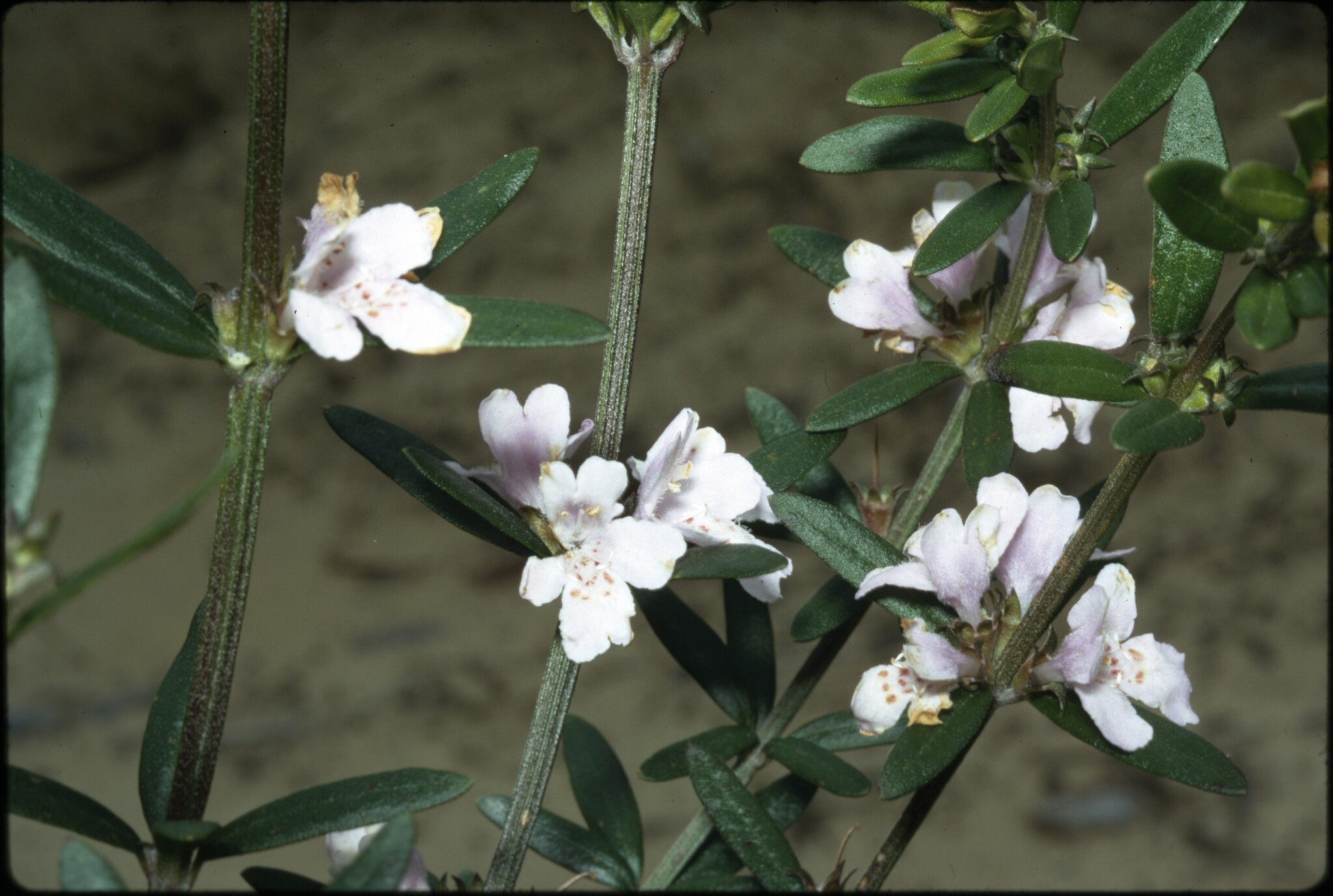
Commemorating Dr Johan Peter Westring (1753–83), Swedish physician and lichenologist.
Shrubs, often with angular branches. Leaves in whorls of 3-5 per node. Flower clusters raceme-like, sometimes solitary. Flowers with the calyx of 5 more or less equal lobes. Corolla 2-lipped, 5-lobed, the lower lip mostly directed forwards. Stamens 2 on the upper side of the mouth, sterile stamens 2, on lower side. Ovary 4-lobed.
Grown for their compact form and white, blue or mauve flowers. Hemigenia is a genus closely related to Westringia but differs in having upper stamens with elongated connectives that have swollen and bearded ends. It is not common in cultivation but the coastal shrub H. purpurea R. Br. from NSW is occasionally available.
Cuttings.
Calyx 5-lobed; corolla 2-lipped; leaves in whorls of 3-5.
25 species endemic to all states of Australia as well as Lord Howe Island.
Source: (2002). Thymus. In: . Horticultural Flora of South-eastern Australia. Volume 4. Flowering plants. Dicotyledons. Part 3. The identification of garden and cultivated plants. University of New South Wales Press.

A prostrate, layering, coastal form to 30 cm or so tall.
Introduced by Rouse Nursery, NSW, c. 1997.
A hybrid between W. fruticosa and a mauve form of W. eremicola raised in Brisbane.
A compact shrub to about 1.5 m tall and wide with violetblue flowers throughout the year;
it appears to have given rise to other cultivars such as W. 'Wynyabbie Gem Compact' and W. 'Wynyabbie Gem White'.
W. 'Poorinda Pavane' is occasionally offered and was first listed in the mid-1970s. ['Pavan']